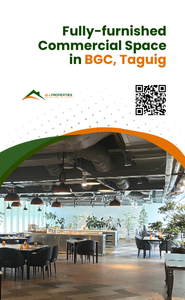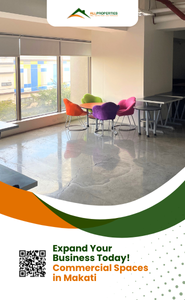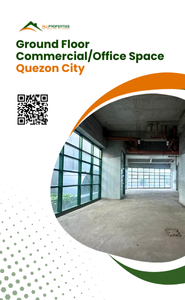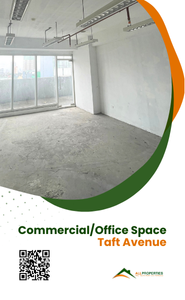Eco-Friendly Real Estate: Navigating the Path to Green Development
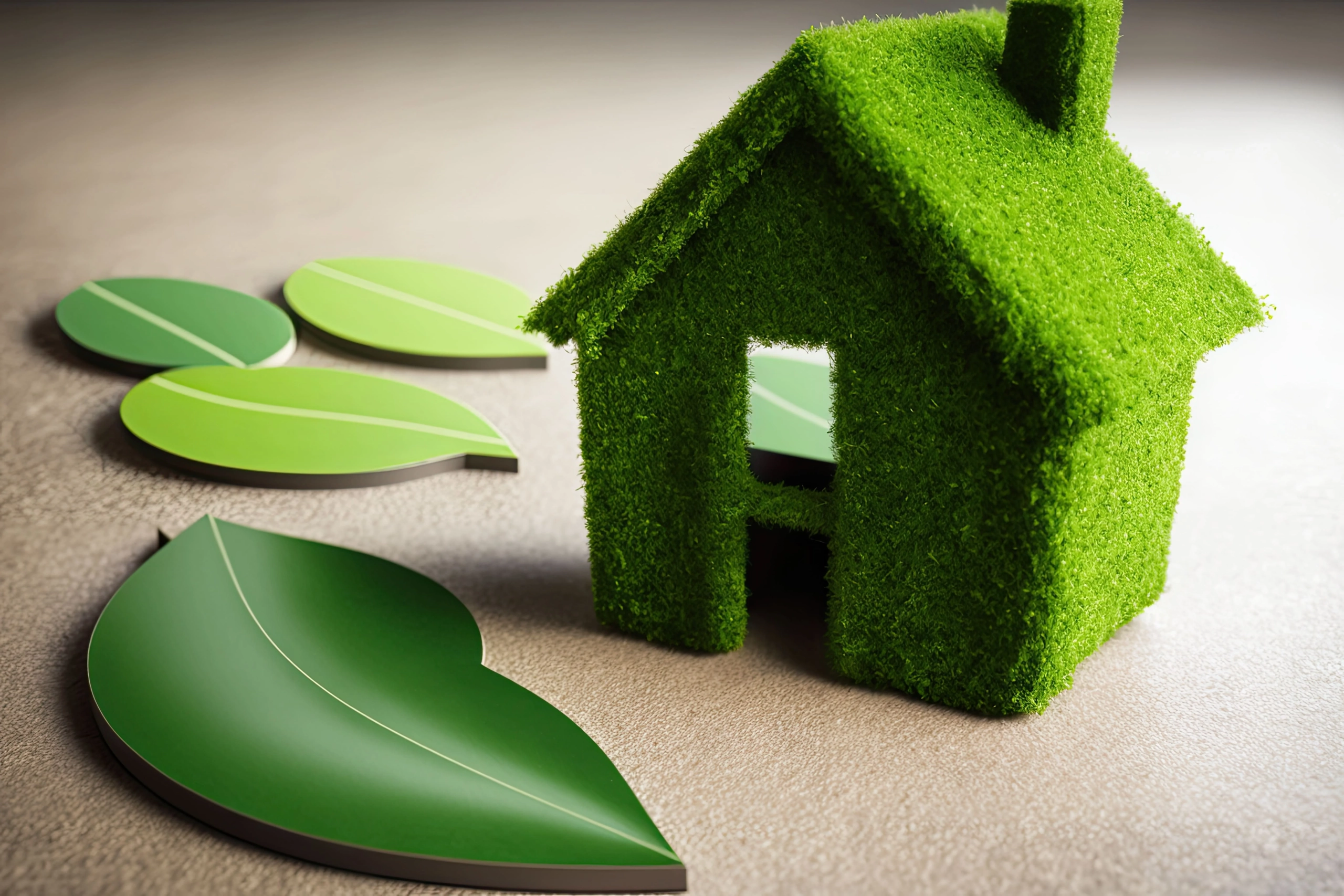
The real estate industry has the power to shape neighborhoods, cities, and even nations. But as a result of its tremendous impact on our world, it’s also one of the most environmentally destructive industries. This is especially true when we look at the development stage of real estate. From construction materials to building design and use patterns for new homes, there are many ways that building new homes can negatively affect our planet. However, things are changing thanks to a growing interest in green building practices that focus on minimizing environmental impact while maximizing energy efficiency and sustainability.
The importance and relevance of eco-friendly real estate in today’s world cannot be overstated. The ecological footprint of humanity has increased exponentially over the past century, due largely to population growth and industrialization. This has resulted in several negative effects on our environment:
- Global warming
- Air pollution (i.e., carbon dioxide emissions)
- Water pollution (i.e., acid rain)
- Soil erosion (i.e., deforestation)
The negative effects that result from these four factors are well documented and widely recognized by scientists worldwide; however, there are also many less obvious consequences that must be considered when developing real estate projects or modifying existing ones for sustainability purposes: species extinction, loss of biodiversity, increased stress on natural resources such as water supply systems, etc.
RELATED: 7 Insights on Sustainability in Real Estate: The Power of Adaptive Reuse
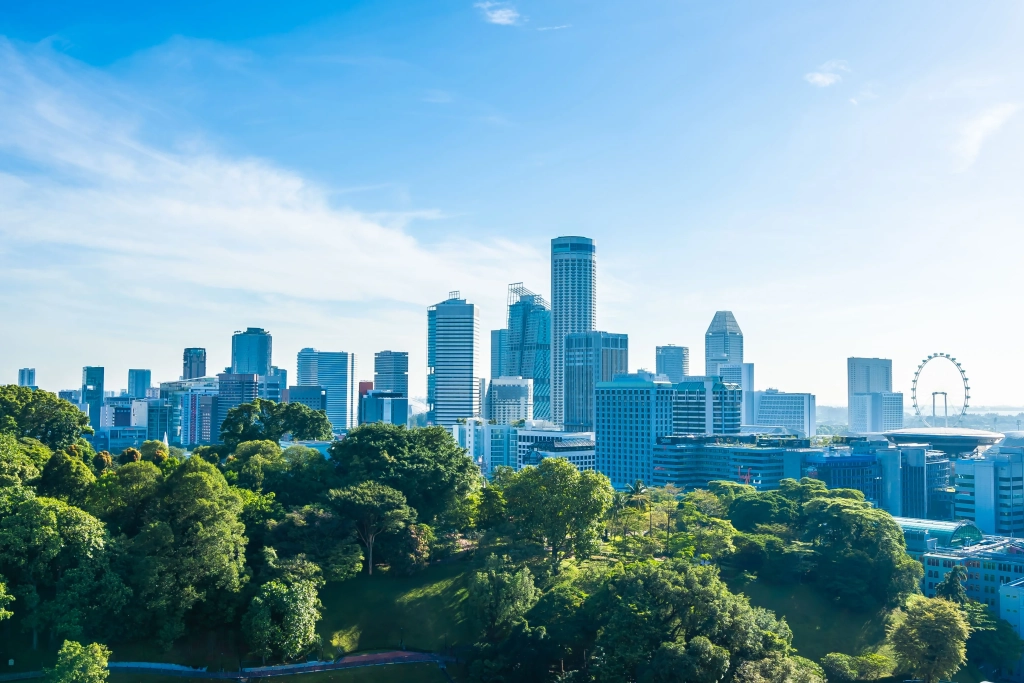
Understanding Eco-friendly Real Estate
Eco-friendly real estate, often referred to as green or sustainable real estate, is a proactive approach toward designing, building, and maintaining properties that promote environmental sustainability and reduce harmful impacts on the environment.
Key Factors in Green Real Estate Developments:
- Energy Efficiency: Green buildings are designed to reduce the overall energy consumption and promote the use of renewable energy sources. Techniques included are proper insulation, efficient HVAC systems, and usage of Energy Star endorsed appliances.
- Water Efficiency: Water conservation practices are vital in eco-friendly real estate. This includes water-saving appliances, well-planned irrigation systems, and rainwater harvesting.
- Sustainable Building Materials: These properties are constructed with materials that are renewable, recyclable, and have less environmental impact. Examples include bamboo, reclaimed wood, recycled metal, and concrete.
- Indoor Environmental Quality: This pertains to the quality of the air inside the building, which can be maintained through proper ventilation, the use of non-toxic materials, and the presence of ample natural light.
- Site Selection: An eco-friendly building should be located in an area with access to public transport, nearby services, and amenities to reduce the need for cars and thus, reduce carbon emissions.
The environmental, social, and economic benefits of green properties:
- Reduced Energy Costs: Energy-efficient technologies reduce power consumption, which can translate to significant savings on energy bills.
- Aligned With Consumer Demand: With increasing awareness about climate change, more consumers are opting for sustainable living solutions.
- Promote Healthier Living Space: Green buildings often provide better indoor air quality and natural lighting, promoting a healthier indoor environment.
- Higher Resale Value: There is a growing market for eco-friendly properties, yielding potentially higher returns on investment.
- Sustainability: Green real estate developments contribute to the preservation of the environment and natural resources for future generations.
Adopting eco-friendly real estate is a big step towards a sustainable future. It contributes significantly to environmental preservation while offering economic and societal benefits as well.
The Current State of Green Development
The number of LEED-certified buildings, which represent the forefront of commitment to sustainable architecture, continues to grow each year, with over 100,000 certified commercial projects in more than 180 countries and territories globally.
In the Philippines, green real estate development initiatives are on the rise, driven by increasing awareness about sustainability’s importance. For instance, rent premiums for green buildings typically range between 2% and 23% higher than non-green buildings. Furthermore, 7 out of 10 building occupiers are willing to pay a premium to lease green buildings, as they recognize the value of green certifications such as LEED. This commitment to sustainability has prompted more multinational and local companies to incorporate these eco-friendly practices in the Philippines. Research suggests that by 2023, there will be a significant hike in green-certified buildings and sustainable developments, transforming the norm of the country’s real estate landscape.
Key Trends and Developments:
- Increase in Green Projects: There has been a notable increase in the number of green real estate projects in the Philippines. Developers are integrating green concepts into their properties, whether residential, commercial, or industrial. This includes using sustainable construction materials, installing energy-efficient systems, and incorporating elements like green roofs and gardens.
- Government Support and Regulations: The government has shown support for environmentally friendly construction. The Philippine Green Building Code, implemented in 2015, encourages energy conservation, water and wastewater management, and the use of sustainable materials.
- Rise of Green Certifications: More buildings in the Philippines are pursuing green certifications such as the Leadership in Energy and Environmental Design (LEED) and the local Building for Ecologically Responsive Design Excellence (BERDE) programs. Pursuing these certifications testifies the commitment to sustainability and can bring several benefits, from marketability to potential cost savings and incentives.
Challenges:
Despite the promising trends, there are still challenges to green development in the Philippines:
- Higher Initial Cost: The upfront cost of incorporating sustainable features and technologies can be higher than conventional methods, even though they can potentially lead to long-term savings due to lower energy and water costs.
- Awareness and Understanding: There is still a need for greater awareness and knowledge about the benefits of green buildings among consumers and even within the real estate industry.
- Infrastructure and Policy Support: While there are policies to support green building, there is room for more comprehensive guidelines, incentives, and infrastructure support.
Navigating the Path to Green Development
Having a clear, environmentally sustainable goal helps ensure consistency, compliance, and long-term value throughout the development process. A well-defined goal provides direction and serves as a guiding principle for the entire development process. This helps ensure that all decisions made, from site selection to building design and materials selection, are aligned with the overarching sustainability objectives. With a clear goal in mind, real estate developers can allocate resources more efficiently, focusing on eco-friendly solutions that have the greatest impact on the project’s sustainability. Following are the steps toward achieving sustainability in real estate:
- Site Selection and Planning: Choose a site for construction that will minimize environmental impact. This involves considering factors like landscape preservation, minimal disruption to natural habitats, and easy access to public transportation for lower carbon footprints.
- Energy Efficiency Planning: Design buildings to reduce energy consumption. This can include the use of energy-efficient appliances and systems, as well as building design that maximizes natural light and air flow to reduce reliance on artificial lighting and air-conditioning.
- Resource-Efficient Construction Methods: Use construction methods that reduce waste and promote the use of recycled and renewable resources. These methods can include modular construction, where parts of the building are made off-site and assembled on-site, and the use of sustainable construction materials.
- Water Efficiency Measures: Implement water-saving technologies and strategies. This can include low-flow fixtures, rainwater harvesting systems, greywater recycling, and drought-tolerant landscaping.
- Indoor Environmental Quality Planning: Take measures to improve indoor air quality and the overall indoor environment. This can include the use of materials that release fewer volatile organic compounds (VOCs), measures to control moisture and mold, and design features that maximize natural light and allow for air circulation.
- Operation, Maintenance, and Renovation of Green Buildings: Implement maintenance and operation practices that preserve the eco-friendly features of the property. This can include regular check-ups of energy and water systems, using eco-friendly cleaning products, and considering sustainability in any renovations or improvements.
These steps require careful planning and a commitment to sustainability. When properly executed, they create real estate that not only reduces environmental
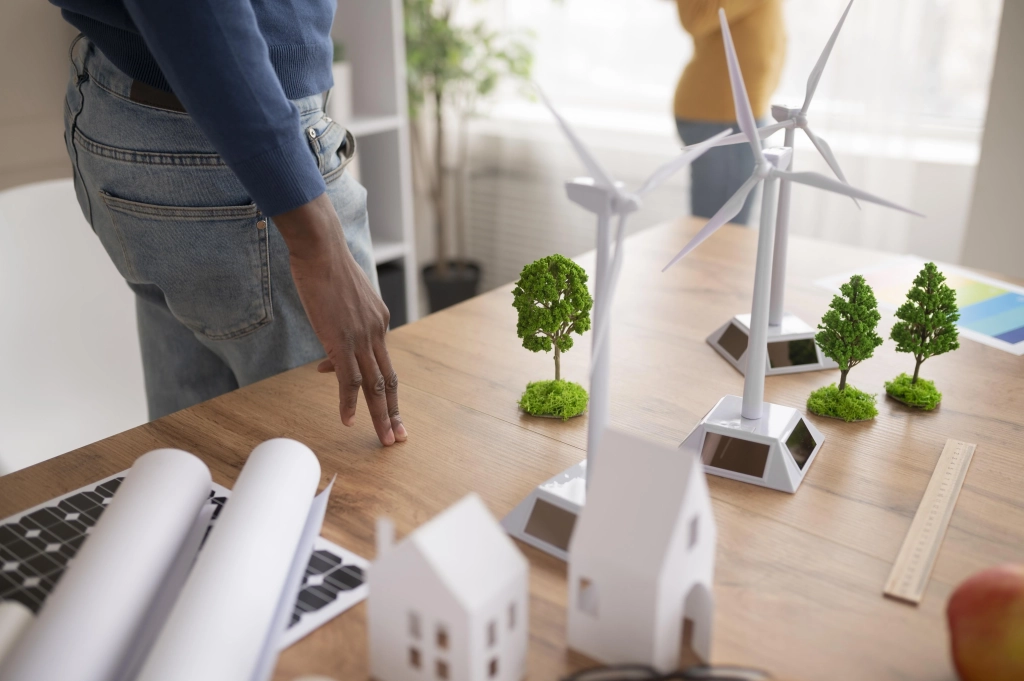
The Role of Renewable Energy in Green Development
Renewable energy is a critical component of green development, and for good reason. It provides a sustainable and efficient energy source for buildings. By tapping into natural, renewable resources such as solar, wind, hydroelectric, and geothermal power, developers can reduce the buildings’ dependency on non-renewable and polluting fossil fuels. Integrating renewable energy into green building designs not only contributes to reducing greenhouse gas emissions but also helps decrease long-term energy costs for both the building owners and occupants.
One of the prominent ways to incorporate renewable energy in green real estate development is through solar power. Photovoltaic (PV) solar panels can be installed on building rooftops or external surfaces to generate electricity from sunlight. Solar power systems provide a clean and reliable energy source that can be easily integrated with the existing grid infrastructure, enabling buildings to offset their energy consumption and possibly generate surplus electricity to sell back to the grid.
Another option is utilizing wind turbines installed on-site or in wind farms nearby to generate power for real estate developments. Depending on the location and size, wind turbines can produce substantial amounts of clean energy, contributing to reducing the building’s carbon footprint and making it more sustainable.
Moreover, geothermal energy can be harnessed as an innovative solution for heating and cooling systems in green buildings. By using the stable underground temperature, geothermal heat pumps can effectively provide heating or cooling with minimal electricity consumption, reducing both energy costs and emissions.
Finally, energy management systems can assist in optimizing the use of these renewable energy sources. By using smart grid technologies, real-time monitoring, and data analysis tools, property managers can efficiently allocate renewable energy resources, prioritize tasks with high energy demand, and detect equipment inefficiencies or malfunctions to ensure maximum energy savings and sustainability.
Understanding Green Certifications
Green certifications not only demonstrate the commitment of a real estate project to sustainability but also respond to the increased demand from real estate property customers for more environmentally-friendly, energy-efficient, and health-conscious buildings. Here are the most sought after certifications:
- Building for Ecologically Responsive Design Excellence (BERDE): Developed by the Philippine Green Building Council, BERDE is the national voluntary green building rating system. A BERDE certification means that the real estate project has achieved certain ecological and sustainability standards.
- Leadership in Energy and Environmental Design (LEED): This is an international green building certification system that has specific standards depending on the nature of the project. Real estate projects that achieve LEED certification in the Philippines have demonstrated commitment to sustainable design and construction.
- Excellence in Design for Greater Efficiencies (EDGE): EDGE is an innovation of IFC, a member of the World Bank Group, and it includes a universal standard, a certification system, and a software that supports the design of green buildings. It’s applicable globally and helps property developers in the Philippines build and brand green in a fast, easy, and affordable way.
- Green Building Standards by TÜV SÜD: While primarily an international certification, TÜV SÜD also extends its expertise to cover several national green building standards applicable to local markets, including the Philippines.
- WELL: The WELL Building Certification is a performance-based global rating system that assesses the impact of built environments on human health and wellness. Developed by the International WELL Building Institute, the certification measures seven core concepts of a building: air, water, nourishment, light, fitness, comfort, and mind. The certification process involves rigorous testing and verification, aiming to ensure that the built environment supports the health and well-being of occupants. Achieving WELL Certification demonstrates that a real estate project is constructed and operated to boost occupants’ health and productivity, contributing significantly to overall wellness.
Investors and Green Development
For investors, the appeal of green development goes beyond the reduced operational costs associated with energy and water efficiency. Green buildings often attract higher quality tenants who are willing to pay premium rents, resulting in increased return on investment. Moreover, green buildings generally hold better property values and have improved marketability compared to conventional buildings, appealing to both current and prospective investors in the real estate market.
Moreover, green developments often have a healthier and more productive indoor environment. Green buildings typically incorporate superior indoor air quality, natural light, green spaces, and other features that promote occupant health and well-being. These features can reduce sick days, increase productivity, and create more desirable living and working conditions, all of which can enhance an investor’s reputation and yield higher occupancy rates.
Another critical aspect is the financing opportunities available for green real estate developments. Various incentives and funding possibilities exist to encourage green development, including tax credits, grants, and subsidies, offering additional financial incentives for investors. Furthermore, several financial institutions are now providing green mortgages and loans, which often have better terms for financing environmentally friendly and sustainable buildings.
As sustainability becomes more important and occupant expectations continue to evolve, green development will undoubtedly become the standard in real estate investment strategy.
Future of Green Development in the Real Estate
In the real estate industry, one trend to watch out for is the increased integration of smart technologies into green buildings. Intelligent control systems, energy-efficient appliances, and highly automated building management systems will all play a crucial role in conserving energy and reducing overall environmental impact. For instance, the incorporation of the Internet of Things (IoT) can help to control HVAC, lighting, and security more efficiently, further contributing to a building’s sustainability.
Green building materials, that are both environment-friendly and geared towards enhancing the efficiency and comfort of buildings, are likely to become more prevalent. This includes extensive use of recycled and locally sourced materials, use of renewable materials such as bamboo and hempcrete, and increased investment in research to improve the performance of such materials.
Net-zero and net-positive energy buildings are poised to become more common in the future. These buildings generate their own energy on-site, often through renewable sources like solar and wind. The goal is to produce as much or more energy than they consume, reducing their carbon footprint and often contributing excess energy back to the grid.
The future of green real estate will also be significantly driven by policy and regulations. As governments become more committed to sustainable development goals, stricter regulations on energy efficiency and sustainability for buildings can be expected to be rolled out. This will further compel property developers to integrate green measures in their projects.
Read more here: AllProperties Latest Blogs

